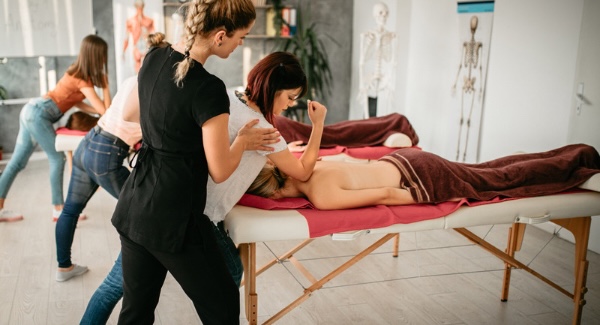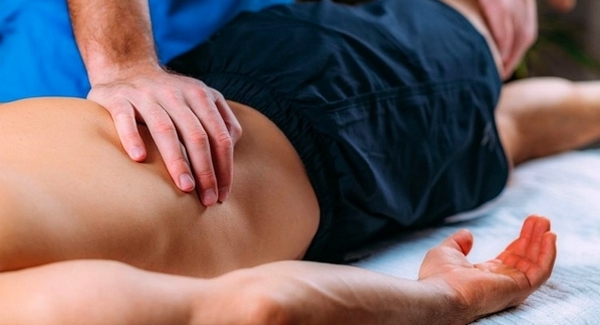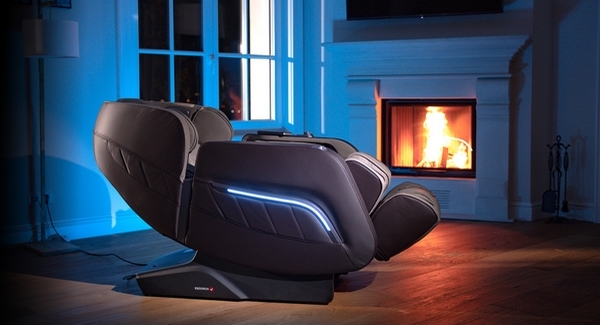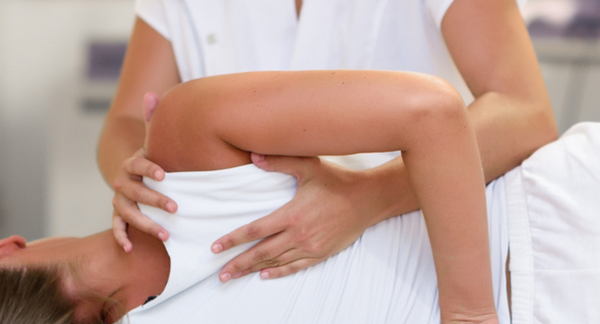Thai Massage for Flexibility and Mobility: How it Helps Improve Range of Motion
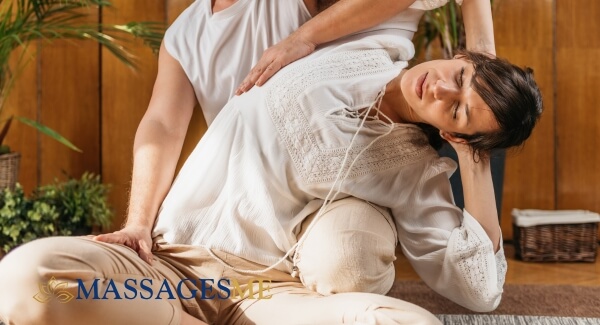
Flexibility and mobility are fundamental components of physical health, yet they're often neglected until stiffness, discomfort, or restricted movement disrupts daily life. Whether you're an athlete seeking peak performance, someone recovering from injury, or simply noticing that bending down or reaching overhead has become increasingly difficult, improving your range of motion can dramatically enhance the quality of your life.
Thai massage offers a uniquely practical approach to building and maintaining flexibility. Unlike passive treatments, where you lie still while a therapist works on isolated muscle groups, Thai massage actively engages your body through assisted stretching, rhythmic compression, and guided movement. This dynamic practice doesn't merely relax tight muscles; it systematically increases joint mobility, lengthens shortened tissues, and restores the body's natural capacity for fluid, unrestricted movement.
This article explores how Thai massage improves flexibility and mobility, examining the specific mechanisms that make it so effective, reviewing the scientific evidence supporting these benefits, and providing practical guidance for incorporating this therapeutic practice into your wellness routine.
Understanding Flexibility and Mobility: Why They Matter
Before examining how Thai massage enhances these qualities, it's helpful to understand what flexibility and mobility actually mean and why they're essential for health.
Flexibility refers to the ability of muscles and tendons to lengthen, allowing joints to move through their full potential range. Tight hamstrings that prevent you from touching your toes or stiff shoulders that limit overhead reaching reflect reduced flexibility.
Mobility encompasses the ability to move joints freely and easily through their complete range of motion whilst maintaining control. It combines flexibility with strength, coordination, and joint health. You might have flexible muscles but poor mobility if weakness or joint restrictions prevent controlled movement.
Both qualities decline naturally with age, sedentary lifestyles, repetitive movement patterns, and injury. This deterioration creates a problematic cycle: reduced movement leads to further stiffness, which encourages even less movement. The result is diminished independence, increased injury risk, chronic pain, and reduced quality of life.
Maintaining or improving flexibility and mobility offers numerous benefits:
- Reduced injury risk: Supple tissues and mobile joints better withstand sudden movements and physical demands
- Improved posture: Flexible muscles allow proper alignment rather than pulling the body into compensatory positions
- Enhanced athletic performance: Greater range of motion enables more powerful, efficient movement
- Decreased pain: Many chronic pain conditions relate to restricted movement and muscle tension
- Better balance and coordination: Mobile joints and responsive muscles support stability and prevent falls
- Increased independence: Simple daily activities like dressing, gardening, or playing with children become easier
Thai Massage: A Dynamic Approach to Flexibility
Thai massage, or Nuad Thai, distinguishes itself from other bodywork styles through its active, movement-based approach. Rather than simply applying pressure to release muscle tension, Thai massage systematically guides the body through stretches and movements that directly address flexibility and mobility limitations.
The Fundamental Principles
Several core principles make Thai massage particularly effective for improving range of motion:
Active participation: Whilst the therapist initiates and guides movements, recipients engage through breathing, gentle cooperation, and sometimes active resistance. This participation creates neurological changes that help the body accept and integrate new movement patterns.
Full-body integration: Rather than isolating individual muscles, Thai massage works through connected chains of tissue. A hip stretch might simultaneously address the lower back, thigh, and calf, recognising that these areas function as integrated systems rather than separate parts.
Progressive approach: Therapists gradually deepen stretches as tissues release, working within comfortable limits whilst gently encouraging expansion. This patient progression respects the body's protective mechanisms whilst encouraging positive change.
Energetic framework: Working along Sen lines (energy channels) addresses not just physical restrictions but also energetic blockages that may contribute to stiffness and limited mobility.
Breath coordination: Many techniques coincide with the recipient's exhalation, when muscles naturally release tension. This breathing awareness enhances the effectiveness of stretches and deepens relaxation.
The Mechanisms: How Thai Massage Improves Flexibility and Mobility
Thai massage employs multiple therapeutic mechanisms that work synergistically to enhance the range of motion. Understanding these processes illuminates why the practice proves so effective.
Assisted Stretching: Lengthening Shortened Tissues
The hallmark of Thai massage is its extensive use of assisted yoga-like stretches. Unlike self-stretching, where your own flexibility limits how far you can reach, assisted stretching enables a skilled therapist to guide your body into positions you cannot achieve on your own.
These stretches work through several physiological processes:
Mechanical lengthening: Sustained, gentle stretching physically elongates muscle fibres and fascial tissue. Regular stretching encourages the body to add sarcomeres (contractile units) to muscle fibres, genuinely increasing their resting length over time.
Neurological release: Muscles contain stretch receptors that trigger protective contraction when elongation occurs too quickly. By moving slowly and respecting the body's limits, Thai massage enables these reflexes to relax, allowing for deeper stretching without triggering resistance.
Fascial release: Fascia, the connective tissue network surrounding muscles, can become dense and adhered, restricting movement. Stretching combined with pressure helps restore fascial suppleness and glide.
Thai massage incorporates stretches for every central body region:
- Leg stretches: Opening the hips, lengthening hamstrings, releasing calves and feet
- Back stretches: Twisting, lateral bending, and extension movements that restore spinal mobility
- Shoulder and arm stretches: Opening the chest, releasing shoulder tension, improving arm range
- Neck stretches: Gentle movements that address the commonly tight neck and upper shoulder region
Each stretch is held for sufficient duration to allow tissue release, typically 30 seconds to several minutes, depending on the area and the recipient's response.
Muscle Tension Reduction: Releasing Chronic Holding Patterns
Chronic muscle tension severely limits flexibility. When muscles remain partially contracted, they cannot fully lengthen, and the joints they cross cannot achieve a full range of motion. Thai massage addresses this through multiple approaches:
Acupressure along Sen lines: Rhythmic pressure applied along energy pathways releases muscular holding patterns. This pressure stimulates blood flow, encourages relaxation, and addresses trigger points that contribute to restricted movement.
Compression techniques: Using palms, forearms, or feet, therapists apply broad, sustained pressure to muscle groups. This compression relaxes the nervous system, reduces muscle tone, and prepares tissues for deeper stretching.
Rocking and mobilisation: Gentle rocking movements create a meditative rhythm that signals safety to the nervous system. When the body perceives safety, protective muscle tension naturally releases.
The combination of these tension-reducing techniques with stretching proves more effective than either approach alone. Muscles must relax before they can fully lengthen, and Thai massage addresses both requirements simultaneously.
Enhanced Circulation: Supporting Tissue Health and Recovery
Flexibility depends not just on mechanical tissue properties but on the health of those tissues. Poor circulation compromises muscle and joint health, contributing to stiffness and reduced mobility. Thai massage significantly enhances blood flow through several mechanisms:
Mechanical pumping: Rhythmic compression and release create a pumping effect that pushes blood and lymph through tissues. This removes metabolic waste products whilst delivering fresh oxygen and nutrients.
Vasodilation: The pressure and stretching stimulate local blood vessel dilation, increasing circulation to worked areas. This enhanced blood flow supports tissue repair and regeneration.
Reduced muscle tone: When chronically tight muscles relax, blood vessels within them open, improving perfusion. This is particularly important in areas such as the neck and shoulders, where chronic tension can significantly impair blood circulation.
Improved circulation benefits flexibility in multiple ways:
- Delivering nutrients necessary for tissue repair and elasticity
- Removing inflammatory compounds that contribute to stiffness
- Supporting joint lubrication through enhanced synovial fluid production
- Accelerating recovery from exercise or injury
Joint Mobilisation: Restoring Articular Function
Thai massage doesn't only address muscles; it directly influences joint mobility through gentle traction and mobilisation techniques. As therapists move limbs through their range of motion, several beneficial effects occur:
Synovial fluid circulation: Movement stimulates the production and circulation of synovial fluid, the lubricant that allows smooth joint motion. Regular mobilisation maintains this vital lubrication system.
Cartilage nutrition: Joint cartilage lacks direct blood supply and receives nutrients through diffusion from synovial fluid. Movement facilitates this nutrient exchange, supporting cartilage health.
Capsular stretching: Joint capsules (the fibrous tissue surrounding joints) can tighten and restrict motion. Gentle traction and movement stretch these capsules, gradually increasing the range of motion.
Neuromuscular re-education: Moving joints through their full range reminds the nervous system of available motion. This can help overcome protective restrictions that persist after injuries have healed.
Scientific Evidence: What Research Shows
Whilst Thai massage has centuries of traditional practice supporting its effectiveness, modern scientific research increasingly validates these benefits through controlled studies.
Key Research Findings
Chiang Mai University study: Research conducted at Thailand's Chiang Mai University compared Thai massage with bed rest for reducing muscle stiffness and enhancing joint mobility. The study found Thai massage significantly more effective than passive rest, with measurable improvements in range of motion and reductions in muscle tension following treatment sessions.
Flexibility improvements: Multiple studies have documented increased flexibility following Thai massage, particularly in commonly restricted areas such as the hamstrings, hip flexors, and shoulders. One study showed significant improvements in both upper and lower body flexibility after a series of Thai massage sessions, with effects persisting for several days post-treatment.
Back flexibility: Research specifically examining lower back flexibility found that Thai massage produced greater improvements compared to conventional treatments. Participants reported reduced stiffness and increased ease of movement in daily activities.
Athletic performance: Studies involving athletes have shown that Thai massage can enhance flexibility and range of motion, potentially improving performance whilst reducing injury risk. The assisted stretching component proves particularly valuable for athletes who may struggle to achieve adequate stretch depth independently.
Chronic pain conditions: For individuals with conditions like chronic back pain or fibromyalgia, where restricted movement and muscle tension contribute to symptoms, Thai massage has demonstrated benefits in reducing pain whilst improving mobility and function.
Mechanisms Confirmed by Research
Scientific investigations have begun to elucidate the mechanisms through which Thai massage produces these benefits:
- Increased parasympathetic activity: Studies show that Thai massage shifts the nervous system toward parasympathetic (rest-and-digest) dominance, reducing muscle tone and facilitating relaxation
- Improved tissue extensibility: Measurements of muscle and fascial tissue properties show increased elasticity following Thai massage treatment
- Enhanced proprioception: Thai massage appears to improve body awareness and joint position sense, contributing to better movement control
- Reduced inflammatory markers: Some research suggests Thai massage may reduce systemic inflammation, potentially addressing one factor contributing to tissue stiffness
Additional Benefits for Mobility and Movement Quality
Beyond direct effects on flexibility, Thai massage produces several additional benefits that enhance overall mobility and movement quality.
Postural Improvements
Many mobility limitations stem from postural imbalances. Tight chest muscles pull shoulders forward; shortened hip flexors tilt the pelvis; weak core muscles fail to support proper spinal alignment. Thai massage addresses these patterns by:
- Releasing chronically shortened muscles that pull the body out of alignment
- Stretching areas that have become restricted due to poor posture
- Restoring balanced tension across paired muscle groups
- Improving body awareness, helping recipients recognise and correct postural habits
Better posture naturally translates to improved mobility, as joints can move more freely when properly aligned.
Balance and Coordination
The dynamic, movement-based nature of Thai massage enhances balance and coordination. As therapists guide recipients through complex movements and stretches, the nervous system receives valuable input about body position and movement patterns. This proprioceptive training improves:
- Awareness of body position in space
- Coordination between different body segments
- Balance responses and stability
- Movement efficiency and grace
These neurological benefits complement the physical flexibility gains, producing more comprehensive improvements in functional mobility.
Injury Prevention and Recovery
Improved flexibility and mobility directly reduce injury risk through several mechanisms:
- Increased tissue resilience: Supple muscles and mobile joints better withstand sudden forces or awkward movements
- Better movement patterns: Enhanced range of motion allows proper technique in sports and daily activities
- Reduced compensatory stress: When one area moves freely, neighbouring regions experience less compensatory strain
- Faster recovery: The circulatory and lymphatic benefits support healing processes
For those recovering from injuries, Thai massage can safely restore mobility without the high forces that might re-injure healing tissues.
Mental and Emotional Benefits
The flexibility-enhancing aspects of Thai massage occur within a broader therapeutic context that includes significant mental and emotional benefits. The meditative quality of the practice, the focused attention from the therapist, and the deep relaxation achieved all contribute to:
- Reduced stress and anxiety
- Improved body image and acceptance
- Greater willingness to move and be active
- Enhanced motivation for self-care practices
These psychological benefits often prove as important as the physical changes in supporting long-term mobility and wellness.
Practical Considerations: Getting the Most from Thai Massage
To maximise the flexibility and mobility benefits of Thai massage, several practical factors warrant consideration.
Session Duration and Frequency
Typical session length: Thai massage sessions generally last 60 to 90 minutes, though some traditional treatments extend to two hours. This duration allows sufficient time to work through the entire body systematically, addressing all major muscle groups and joints.
Frequency for building flexibility: For those specifically seeking flexibility improvements, regular sessions prove most effective. Beginning with weekly treatments for four to six weeks establishes initial gains, after which maintenance sessions, every two to four weeks, sustain these improvements.
Consistency matters: Like any flexibility training, consistent practice yields better results than sporadic intensive work. Regular sessions train the nervous system to accept new movement ranges and encourage lasting tissue changes.
What to Expect During Treatment
Clothing: Unlike oil-based massage, Thai massage is performed fully clothed. Wear loose, comfortable clothing that allows free movement, similar to what you might wear for yoga. Many practitioners provide suitable garments if needed.
Initial discomfort: Some stretches, particularly in chronically tight areas, may feel intense. This should be a "good hurt," the sensation of tissues lengthening rather than sharp pain. Always communicate with your therapist about your comfort levels, as excessive intensity can trigger protective muscle contractions that defeat the purpose.
Progressive deepening: First sessions often feel more intense as the body adjusts to this type of work. With regular treatment, tissues become more pliable and sessions feel more comfortable whilst achieving greater depth.
Post-session effects: You may feel slightly sore the day following treatment, similar to how muscles feel after exercise. This typically resolves within 24 hours and lessens with regular sessions. Increased flexibility should be immediately noticeable and continue improving for several days post-treatment.
Finding Qualified Practitioners
The effectiveness and safety of Thai massage depend heavily on the practitioner's skill. For authentic treatment that honours the tradition whilst effectively addressing your flexibility goals, seek therapists who:
- Have completed comprehensive training (minimum 200 hours, preferably more)
- Understand anatomy and contraindications
- Can modify techniques for individual needs and limitations
- Maintain appropriate professional standards and ethics
For those in the UK seeking qualified practitioners who specialise in traditional techniques, you can find experienced Thai massage therapists in the UK who understand how to safely and effectively improve flexibility and mobility.
Complementary Practices
Thai massage works synergistically with other flexibility-enhancing practices:
Yoga: The stretches in Thai massage mirror yoga postures, and regular yoga practice reinforces the flexibility gains from massage sessions.
Self-massage and foam rolling: Between professional sessions, self-care practices maintain tissue suppleness and address emerging tension.
Strength training: Flexibility without strength can lead to joint instability. Combining Thai massage with appropriate strengthening exercises creates balanced, functional mobility.
Hydration: Adequate water intake supports tissue elasticity and helps flush metabolic wastes released during massage.
Special Populations: Adapting Thai Massage for Different Needs
Thai massage's flexibility benefits can be adapted for various populations and specific requirements.
For Athletes
Athletes require exceptional flexibility and mobility for performance whilst managing the demands of training and competition. Thai massage offers:
- Deep, effective stretching that complements training
- Recovery support between intense training sessions
- Injury prevention through balanced flexibility
- Mental relaxation to complement physical demands
Treatment can be adapted to focus on sport-specific areas (hips and legs for runners, shoulders for swimmers) and scheduled around training and competition cycles.
For Older Adults
Age-related flexibility decline significantly impacts independence and quality of life. Thai massage provides a safe, gentle approach to maintaining mobility:
- Techniques can be modified for reduced tolerance or existing conditions
- The assisted nature means recipients needn't generate force themselves
- Regular sessions help maintain functional range for daily activities
- Balance and proprioception benefits reduce fall risk
Therapists experienced with older clients can adapt pressure and stretch intensity whilst still achieving meaningful improvements.
For Office Workers
Sedentary work creates characteristic patterns of restriction: tight hips and hamstrings from prolonged sitting, forward shoulders from computer use, stiff necks from screen viewing. Thai massage effectively addresses these modern mobility challenges:
- Opening chronically shortened hip flexors and hamstrings
- Releasing chest and shoulder restrictions
- Mobilising the spine after hours of static positioning
- Counteracting the effects of repetitive postures
Regular sessions help prevent the accumulation of restrictions that ultimately lead to chronic pain and reduced function.
During Injury Recovery
When appropriately modified, Thai massage can support recovery from various injuries:
- Gentle mobilisation prevents stiffness during healing
- Work on uninjured areas maintains overall flexibility
- Gradual reintroduction of movement to injured areas as healing progresses
- Addressing compensatory patterns that develop during injury
Always inform your therapist of any injuries and work in collaboration with other healthcare providers overseeing your recovery.
Conclusion: Movement as Medicine
Flexibility and mobility represent fundamental aspects of physical health, yet they're often overlooked until restriction and discomfort force attention. Thai massage offers a comprehensive, practical approach to building and maintaining a range of motion through its unique combination of assisted stretching, pressure techniques, and mindful movement.
The scientific evidence increasingly validates what traditional practitioners have known for centuries: regular Thai massage produces measurable improvements in flexibility, joint mobility, and movement quality. These benefits extend beyond the purely physical, supporting better posture, enhanced athletic performance, reduced risk of injury, and an improved quality of life.
Unlike passive treatments or purely self-directed flexibility work, Thai massage provides skilled guidance through ranges of motion you cannot access alone, whilst simultaneously addressing the muscle tension, circulatory limitations, and energetic blockages that contribute to restricted movement. This multifaceted approach explains why many people find Thai massage more effective than other flexibility-enhancing methods they've tried.
Whether you're an athlete seeking competitive advantage, someone managing chronic stiffness, or simply hoping to move through life with greater ease and comfort, Thai massage offers a time-tested path toward improved flexibility and mobility. The investment in regular sessions pays dividends in how you feel in your body and what you can comfortably accomplish in daily life.
Movement is indeed medicine, and Thai massage provides a uniquely effective way to restore, maintain, and enhance your body's capacity for fluid, unrestricted motion throughout life.
Search Massage Therapists Near You.
More From Our Blog
Latest Blogs
Post-Thai Massage Care: Tips for Maximizing the Benefits After Your Session
Thai Massage for Beginners: Answering Common Questions for Your First Session
Choosing the Right Thai Massage Therapist: What to Look for in a Qualified Professional
Post-Thai Massage Care: Tips for Maximising the Benefits After Your Session
Preparing for Your Thai Massage: Tips on What to Wear and How to Get Ready
How to Talk to Your Therapist for the Best Thai Massage Experience
What to Expect During a Traditional Thai Massage Session
A Guide to How Thai Massage Techniques Can Correct Postural Issues
How Thai Massage Can Help with Back Pain, Headaches, and Sciatica
The Mental and Emotional Benefits of a Thai Massage Session
View All Blogs
Advertise with Massages Me and Grow Your Business!
We are the leading massage platform for massage therapists in London and across the UK covering all of England, Scotland, Wales and Northern Ireland. Our aim is to promote individual therapists and venues in the UK, and help professional and casual body workers providing therapeutic and relaxing massages to expand their businesses and build desirable client base.
We provide a friendly and reliable online advertising platform for qualified Masseuses, students, and salons to connect with potential clients looking for relaxing and therapeutic massages - onsite and offsite mobile services across the UK.
Are you looking to meet more customers? Get your profile listed and start getting bookings today!
